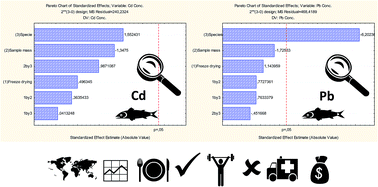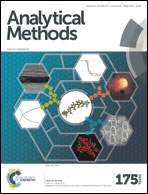Sequential factorial designs for method development of the determination of Cd and Pb in fish and shrimp by GF AAS after sample freeze-drying and tetramethylammonium hydroxide solubilization
Abstract
The development and validation of a simple, reliable and fast method for the determination of cadmium and lead in fish and shrimp by GF AAS, following sample freeze-drying and tetramethylammonium hydroxide (TMAH) solubilization, is presented. The method development was achieved by sequentially applying factorial designs until optimization within the bilinear approximation of the method was accomplished. As such, seven experimental parameters were initially studied, which were considered important for the determination of cadmium and lead in seafood samples using TMAH solubilization. The validation of the method was completed in order to comply with international food regulations and method accreditation under ISO 17025. In this sense, the following parameters were evaluated: linearity, limits of detection and quantification, precision, recovery (trueness), specificity and robustness. Linearity of response was satisfactory for the concentration ranges of both analytes. The residuals for both elements were homoscedastic and independent, with normal distributions. Limits of quantification (LOQ), based on signal standard deviation for low-in-cadmium and lead samples, were 6.25 μg kg−1 and 31.25 μg kg−1, respectively. These figures are in accordance with performance criteria required by the Commission Regulation (EU) no 836/2011. The repeatability of the method, calculated from the analysis of seven sample replicates at two concentration levels of cadmium and lead, by the same analyst, was usually better than 10%. Recovery was estimated from the repeatability evaluation, lying in the range of 84% to 99% for cadmium, and 94% to 107% for lead. Furthermore, a wide evaluation of the method robustness was performed during the method optimization. Thus, the results showed the suitability of the developed method for the determination of Cd and Pb in fish and shrimp by GF AAS, following TMAH solubilization for food control purposes. Additionally, the use of sequential factorial designs in order to achieve bilinear optimization of the method was proven to be a very valuable tool, by sharply reducing optimization time and the number of experiments.


 Please wait while we load your content...
Please wait while we load your content...